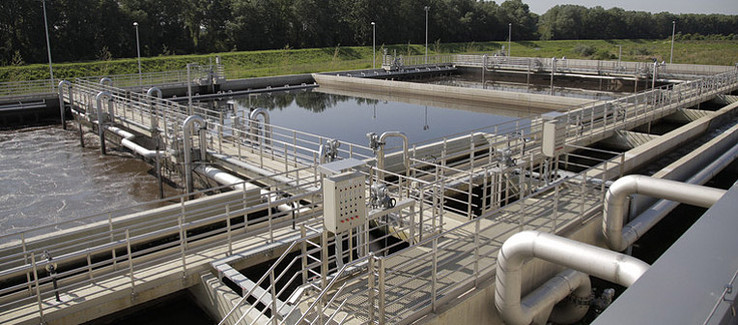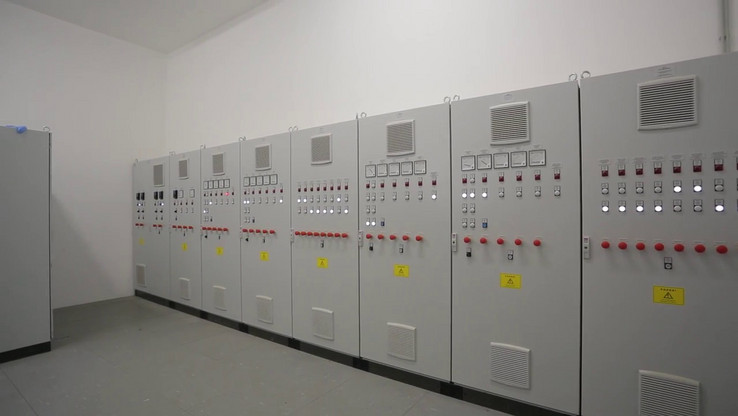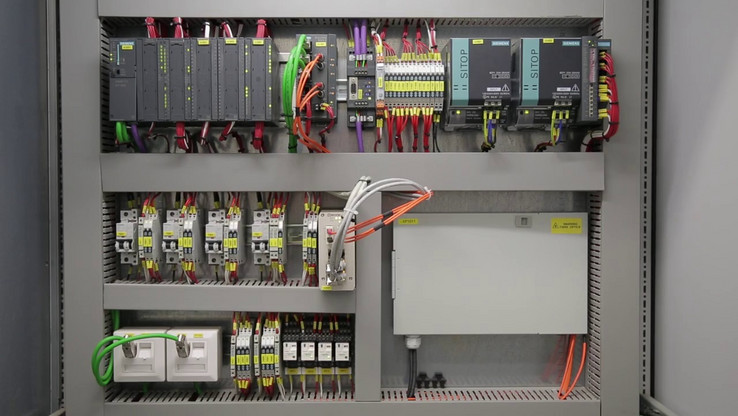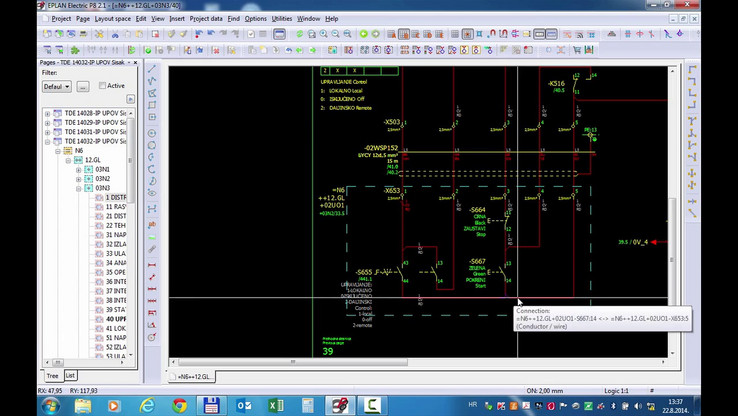Mission accomplished!
The main objective of EPLAN Electric P8 and EPLAN Engineering Configuration One (EEC One) implementation was to speed up the process of schematic generation, using templates based on standardized circuits complying with strict design rules.
Elmap d.o.o. is a private company with more than 20 years of experience in electrical engineering, system automation and control system integration. Thanks to good organization, highly motivated and well-educated employees, we are capable of providing services worldwide.Key experience & expertise in the fields of electrical engineering, system automation and control system integrationElmap d.o.o. is a private company with more than 20 years of experience in electrical engineering, system automation and control system integration. Thanks to good organization, highly motivated and well-educated employees, we are capable of providing services worldwide. Our key sectors are Wastewater treatment and waste disposal systems, in which we are the leading company in Croatia, taking into account the amount of work done and work complexity criteria. In addition to the Water, we are also present in other industries like: Electric power transmission and distribution substation, Renewable energy sources, Metallurgy, Shipbuilding, Petrochemicals, Pharmaceuticals. We provide services in electrical engineering, practically from the beginning up to the end of a project, which undergo the following processes: designing (preliminary -> main -> detailed -> as built), execution of works (cabinets production, on site cabling and wiring, configuring drives, instrumentation parameters setting, dry run tests, commissioning, checking protocols, generation and staff education), automating the process (PLC programming, SCADA software implementation, extracting important data from process and transferring to business LAN using customized reports). Skills, knowledge, experience and „know how“ guarantee a high quality „final product“ no matter in which segment it is used. Our goal is to make the „product“ which fulfils technical specifications and satisfies customer‘s needs.EPLAN is vital in the fields of schematic generation, macros & template generation, parts database & many more
EPLAN Electric P8, with parts and translation databases, is the central point of our design system. EPLAN is used for schemes generation, both multi line and single line. Using Macros and EPLAN Engineering Configuration One (EEC One), we are able to produce templates for different types of schemes. Parts database is additionally customized in order to provide unified descriptions and new properties for devices used within design process. Labelling features: bill of material and/or summarized parts list, cable overview, connections and device/PLC lists and it is extensively used for data transfer to other applications. The original EPLAN translation database is extended with „standardized translations“ which can later be used within any application. EPLAN output lists are used from the data source originating for our own, „in-house developed“ software, which automates electrical design documentation, production and certain project management routines like ordering, tracking production status and work execution. We have integrated EPLAN features within our system software, in order to handle (generate, monitor and execute) the most complex turn-key projects. EPLAN software is used on everyday basis within electrical design and administration tasks, due to the urgency like counting certain project elements, make a list of consumers and/or process instrumentation devices or simply filtering out certain project elements.ELMAP GREEN project
Throughout the Elmap GREEN project (project funded by EU fond for regional development), EPLAN parts database was standardized. We implemented EEC One, which enabled the development of 50 design macros. This process enabled us minimization of the amount of data to be input by our electrical engineers. With smart selection of designing templates being at our disposal, 85% of our electrical design is done automatically, via an EXCEL file using EEC One. By adapting general electrical designing guidelines, we have achieved increased efficiency within the field of output documentation production, which enables a compatible level, where we use texts from EPLAN to construct PLC tags, parts list, drives/motors test protocols, etc. Navigators, Labelling and External editing – are the most valued & appreciated features which ELMAP enjoys. EPLAN Export procedure at ELMAP
EPLAN projects are exported to the customer as PDF documents. Documents (.xls) generated via the „Labelling“ function are used as the input documents (cables list for example) for in-house developed software tools – as these are processed for further utilization by our employees within various applications like test list production, maintenance plan production etc.ELMAP migrated from EPLAN 5 to EPLAN Electric P8 in 2013, providing a higher degree of compatibility, user friendliness and performance
During the 90‘s ACAD was used for schematic generation. Back then, EPLAN 5 was implemented and used for over 10 years. It was in Q2 in 2013 that we switched from EPLAN 5 to EPLAN Electric P8. The switchover resulted with higher degree of compatibility, user friendliness and performance. The main reason for migrating from EPLAN 5 to EPLAN Electric P8 was low level of export functions and slow program performance, which resulted in low productivity. Along with company growth and activity expansion, design tasks became more complex. For that reason, we decided to implement EEC One. Since we were using EPLAN from the beginning, we did not evaluate its competitors.EPLAN – the workflow accelerator – the essence of efficiency
It is our duty to analyse finished jobs and make plans for the future. Questions we asked ourselves (and not only these) were : Did we do the job properly? Can we do this part faster? Could we have finished that earlier? Can we speed up a single process or maybe more processes in a row? What will happen if we change this? These questions brought us to conclusion that we can speed up certain processes within a project without lacking quality, by using the appropriate software solution. At that time we used EPLAN 5. Its flexibility, user friendly interface (navigators, etc.) and most importantly, its powerful data exchange mechanism between EPLAN and non EPLAN applications, have lead us to go for the EPLAN Electric P8 implementation.Scheme generation – primary goal of EPLAN solution
The main objective of EPLAN Electric P8 and EEC One implementation was to speed up the process of schematic generation, using templates based on standardized circuits complying with strict design rules.Mission Accomplished!
Our main goal has been accomplished using features implemented in EPLAN Electric P8 software and EEC One. The EPLAN software has overcome the initial objectives of electrical design productivity and fulfilled the compatibility expectations when using Multilanguage EPLAN features and EPLAN export capabilities, in order to create input data usable for other in-house developed software. With this, we have successfully made EPLAN a starting point for all turn-key projects commissions all the way from design to project execution.Strategy was based on the experience and knowledge of project phases
Our strategy was based on our experience and knowledge of project phases. We have had defined points which were important and then divided them into sections. Solving “small” (non-complex) issues brought us to the main goal. The result was an automated production workflow / standardization and production cost reduction.4 Step Integration:
The four step integration was implemented. Firstly, a „design handbook“ was created, containing compilation of instructions, rules and best practice guidelines linked to our existing experience in project commissioning. The second step involved the adoption of EPLAN guidelines into the production process. This included parts management, text translation and integration of EPLAN import/export, as well as external editing, labelling and macro function features. The outcome within solid parts database and extensive knowledge of EPLAN’s strong functionality enabled us to further improve and automate the production process by utilization of EEC One (Step 3) and automating other non-design related commissioning routines like: project documentation, production and work execution (by processing data exported from EPLAN in user scripts and other programming tools) (Step 4).30-50% design time reduction
The modernization conducted through Elmap GREEN project aimed at increasing companies productivity and resulted in 30-50% design time reduction (depending on project). Furthermore, 30% production increase was achieved due to the in-house developed project documentation derived from the production tool. General work efficiency elevated by 12%, enabling flexibility and increasing the number of satisfied customers. To conclude, additional project commissioning fosters 5-10% time reduction.We consider EPLAN to be not only a drawing tool, but the core for larger system
We are highly satisfied with the software quality. Navigators with powerful filtering options, data exchange with non EPLAN applications through the labelling feature and external editing, are the most frequent used features at ELMAP. We consider EPLAN to be not only a design tool, but moreover the core for larger system.EPLAN features improved final product
We did not switch over from a non EPLAN system. Nevertheless, since EPLAN 5 migrated to EPLAN Electric P8, we figured out that we can use its features to improve our “final product”.Client feedback – vital in quality assurance
Locally it works excellent. For common problems, we usually solve the error almost immediately. When things do get complicated, we need to consult central service and support, which guarantees a response as soon as possible. One of the main objectives in quality assurance is feedback from the client, which we take very seriously.





